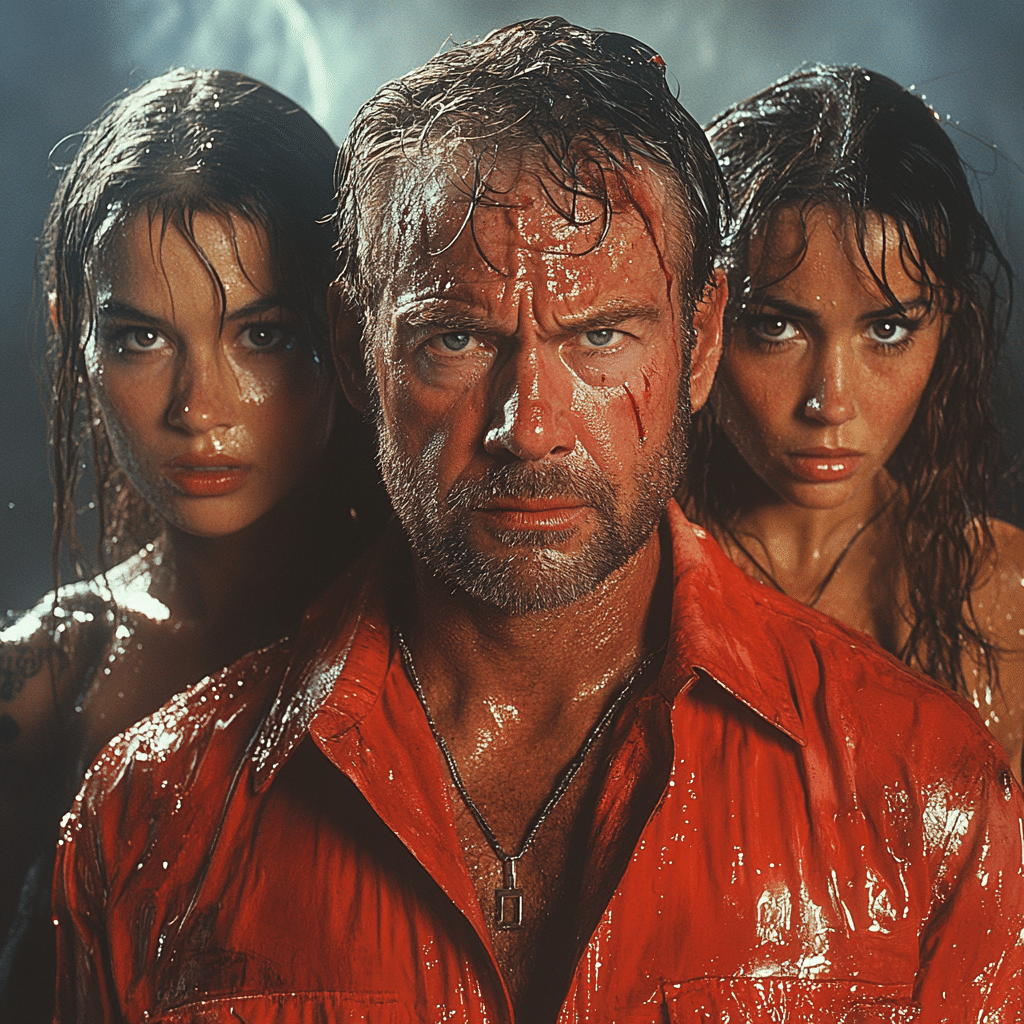The Volcanic Awakening: Understanding the Iceland Volcano Eruption
Iceland, the land of ice and fire, is no stranger to the rumblings of the Earth. Among its inhabitants is the notorious Katla, slumbering beneath glacial caps, watched with baited breath for any signs of awakening. Yet it wasn’t Katla that captured headlines this time, but the fissures near Sundhnúkagigar that split the wintry silence with a spectacular display of our planet’s dynamism. This area, nestled between the serene Blue Lagoon and the coastal town of Grindavík, gave us a glimpse of its molten heart with lava spurting from new fissures, rippling through the crusted exterior.
The island is a geological hotspot, resting atop the Mid-Atlantic Ridge, witnessed by events like the latest spectacle by Stóra-Skógfell. Iceland’s shores are pounded by seismic activity, as exemplified by the historic 2010 Eyjafjallajökull event that sent the aviation world into a tailspin. Eruptions in Iceland tend to be frequent, playing out across the landscape with a regularity that has become part of the nation’s identity.
Volcanoes erupt when tectonic plates move and heat from the Earth’s interior causes mantle rock to melt. Magma rises because it’s buoyant compared to the rock around it. Upon surfacing, pressure release and gas expansion trigger the molten rock to explode. Iceland is more prone to this than most countries because it straddles the divergent tectonic boundary of the North American and Eurasian plates.
Day 1 of the 7-Day Wonder: Immediate Effects of the Eruption
The eruption began on a chilly Thursday morning, the earth’s fury unsheathed with plumes of ash and molten rock at 6:06 AM. The eruption was akin to nature’s pyrotechnic spectacle, but with it came the immediate shutdown of roads to Grindavik, throwing a curveball at many a traveler’s plans. Thankfully, Keflavik International Airport was spared the brunt, standing resilient and functional amidst the chaos.
Eyewitnesses near the eruption site recounted a skyline blotted with ash, a diorama of awe and trepidation. The skies were painted with swirling shades of gray as the ash rode the winds, a reminder of Earth’s unequivocal power. This incursion upon the heavens resulted in a wave of flight cancellations, stranding passengers, and resetting the board for the aviation industry’s daily gamble.

| Category | Details |
|---|---|
| Current Eruption Status | On February 8, 2024, a new fissure eruption occurred by Mt. Stóra-Skógfell on the Reykjanes Peninsula. Eruption began at 6:06 AM and subsided significantly by early February 9, with no visible activity since 8 AM that day. |
| Location of Activity | Eruption localized to Reykjanes Peninsula, near Mt. Stóra-Skógfell, between the Blue Lagoon and Grindavík. The capital city, Reykjavik, and other areas remain unaffected. |
| Travel and Safety Warnings | Roads to Grindavik are closed; the area around the eruption site is unsafe to visit. Keflavik International Airport is operational. |
| Comparative Significance | The 2010 Eyjafjallajökull eruption was more significant, impacting global air travel. The recent Reykjanes activity has been less disruptive. |
| Historical Context | Fagradalsfjall volcano reawakened in March 2021 after 800 years dormant, resulting in annual eruptions on the peninsula. Eruptions have typically ceased quickly. |
| Monitoring of Other Volcanoes | Katla volcano is under surveillance due to its size, glacial cover, and potential to cause flooding if it erupts. |
| Impact on Tourism | While specific sites related to volcanic activity are currently off-limits, the rest of Iceland remains safe for tourists. |
| Economic Considerations | Closure of roads and potential hazards may impact local economies, particularly in Grindavík. National economy remains generally stable with functioning transportation hubs. |
| Environmental Concerns | Potential ash dispersal could affect air quality. Risk of flooding from glacial melting if larger volcanoes erupt, particularly Katla. |
| Public Sentiment | High interest in eruptions but concern over safety and impact on infrastructure and daily life. |
Monitoring the Ash: The Chain Reaction to the Aviation Industry
The aftermath stretched far beyond the land of fire and ice. The volcanic ash cloud, a fine and abrasive particulate, posed significant risks to aircraft, leading to over 100,000 flight cancellations in a flashback to the 2010 Eyjafjallajökull disruption.
Airlines scrambled to respond, with disrupted schedules and rerouted paths. Companies like Icelandair became reluctant custodians of the stranded, their financial ledger a testament to the eruption’s reach. Representatives from British Airways echoed the sentiment, alluding to the strategic juggling act necessitated by nature’s whims. The cost? Millions in lost revenue, and an untallied human cost of disrupted lives and travel plans.
The Eruption’s Ripple Effect on the Global Economy
Volcanoes don’t just cough up ash; they exhale economic upheavals. As the eruption inflated its smoky balloon over the North Atlantic, airfreight industries like DHL and FedEx braced for a logistical labyrinth of grounded fleets and rerouted packages, which strained an already tense international trade environment.
Markets quivered, their indices reflecting the anxious pulses of traders as they witnessed the interruption of air travel ripple across the globe. Tourism in Iceland entered a new chapter of uncertainty, casting a temporary shadow over the land’s otherworldly landscapes.

Nature’s Fury and Technology’s Fight: Predictive Measures and Responses
In the shadow of volcanic Titans, humankind’s gaze has turned increasingly skyward, employing technology to preempt nature’s next outburst. Iceland’s Meteorological Office played oracle, analyzing seismic whispers for indications of an upcoming eruption. Satellites, such as those from the European Space Agency, offered a vigilant eye from above, peeling back the clouds to monitor the Earth’s bluster.
Volcanic ash advisory centers became global traffic controllers, mitigating the fallout through coordinated efforts across borders. Still, the struggle between prediction and reality remained a tenuous dance, one step ahead yet perpetually reactive.
Personal Stories from the Ash Cloud: Impact on Individuals and Communities
Beneath the statistics were personal sagas. Passengers left in limbo, wistfully reminiscing past travels, watching as the world beyond the airport lounges receded. Icelanders, no strangers to nature’s fickle temperament, offered resilience, their communities banding together in the face of uncertainty, while rescue services spun a net of support for those in need.
The psychological undercurrents of such disasters run deep, lingering in the community psyche long after the physical evidence has been erased. Such events redefine perspectives, shaping the communal narrative with threads of solidarity and vulnerability.
Beyond the 7-Day Wonder: Long-Term Environmental and Economic Implications
While the skies cleared, the environmental and economic sequels stretched into a distant horizon. Eruptions like Stóra-Skógfell’s imprint their mark on the climate, their emissions potential players in the globe’s atmospheric chemistry.
Economists, environmentalists, and policymakers converged on recovery strategies, recognizing the extended reel of consequences wound around industries like agriculture and fishing – Iceland’s lifelines. The prognoses varied, from moderate setbacks to calls for reinvention – a baptism by ash reinvesting these sectors with vigor and resilience.
Conclusion: Emergent Lessons and Adaptation Strategies Post-Eruption
In summary, the 2024 Iceland volcano eruption unfurled a complex tapestry, woven with threads of immediate impacts, global repercussions, and the silent strength of human resilience. It unveiled the jagged edge where humankind and nature intersect, prompting introspection on the fragility of our global systems.
This event has undeniably reshaped our engagement with the environment, reinforcing the need for global preparedness and adaptability. By translating the eruption’s teachings into actionable strategies, we can fortify our collective resolve for when the Earth next decides to speak. It beckons a unified call to action – for heightened communication, preemptive planning, and policies sculpted to weather the caprice of our dynamic planet. After all, the tale of Stóra-Skógfell is but one chapter in the ongoing saga of the land of fire and ice, echoing the underlying mantra: adapt, and thrive.
Iceland Volcano Eruption: Fiery Facts That Will Blow Your Mind!
Iceland, the land of fire and ice, has done it again! An recent iceland volcano eruption has everyone’s eyes glued to the news, as flights are getting grounded left and right. But hey, don’t let it get your spirits down. Instead, buckle up for a little trivia ride that’s as explosive as the eruption itself!
Did You Know? – Volcano Edition
Eruptions Can Be Celeb News Too
Imagine you’re chilling, watching one of those Justin Hartley Movies And tv Shows, when suddenly breaking news flashes across the screen with footage of an erupting volcano. Now, wouldn’t that be a dramatic twist? It’s not your average cliffhanger, but Mother Nature sure knows how to steal the spotlight!
Fashion Can Wait
Say you were looking up the latest trends on long Skirts, well, here’s a hot tip—volcanic ash is NOT the accessory of the season. Best to save that fashion show for another day and keep safe indoors till the skies clear up!
Not All Rides Are Smooth
Speaking of travel interruptions, you’d think that the 2024 Genesis Gv80, swanky as it is, could handle a bit of volcanic action. Oh, if only that were true! No vehicle, no matter how luxe, stands a chance against the ash cloud from an iceland Earthquakes eruption. So, if you had a road trip in mind, maybe hold off until Pele, the volcano goddess, chills out.
Eyjafjallajokull, Say What?
Now, try saying that three times fast. The eruption in 2010 of Eyjafjallajökull (bless you) was a travel nightmare, but let’s be honest, the real challenge was getting news anchors around the world to pronounce it right on air. Talk about a tongue-twister!
Volcanoes Have Strange Bedfellows
I mean, who would’ve thunk it, right? One minute you’re scrolling through the peculiar relationship between Adin Ross And Kim jong un, and the next, you’re reading up on the unpredictable friendships between tectonic plates that lead to spectacular eruptions. Life’s weird like that.
A Crash Course on Volcanic Puzzles
The Refinancing Lava Flow
Ever ponder, “What happens if I can’t refinance after divorce?” Well, imagine lava flows as financial woes post-divorce. Hard to contain and potentially destructive, right? Sometimes, both scenarios can have you running for shelter, looking for that solid ground.
Hybrid Cars: The Unexpected Escape Pod?
Now, if you’ve been eyeing those Honda hybrid Cars, you’re on to something. Quiet, fuel-efficient, and less likely to disturb the volcanic peace—sounds like a good escape strategy when things get heated up on the volcanic front!
So while we’re all cooling our jets waiting for flights to resume post-iceland volcano eruption, why not have a little fun with what we’ve learned? Stay safe out there, and keep an eye on those rumbling grounds. Iceland will still be there, ready for adventurers once the skies are friendly again!

Is the Iceland volcano still erupting?
Is the Iceland volcano still erupting?
Nah, it’s been chill since February 9. A new fissure eruption near Mt. Stóra-Skógfell on the Reykjanes Peninsula had its moment in the limelight, popping up on February 8, but by the next day at 8 AM, it simmered down and hasn’t shown any signs of a grand encore.
Is it safe to travel to Iceland with the volcano?
Is it safe to travel to Iceland with the volcano?
Yep, safe as houses! The eruption on the Reykjanes Peninsula has cooled its heels, and travel is all clear except for Grindavik. Reykjavik’s a-okay, and Keflavik Airport’s wheels up with no disruptions. Just steer clear of closed-off areas, and you’re golden.
When was the last big volcanic eruption in Iceland?
When was the last big volcanic eruption in Iceland?
Oof, remember 2010’s Eyjafjallajökull? That ash-spewing drama queen caused a week-long travel nightmare stranding millions. Flash forward to 2024 – the latest show was on the Reykjanes Peninsula, but it was more of a one-hit-wonder, not a chart-topper like Eyjafjallajökull.
Is it safe to go to Reykjavik?
Is it safe to go to Reykjavik?
Absolutely! The capital city is far from the volcanic hoopla and rolling out the welcome mat. So, if you’re eyeing Reykjavik for your next vacay spot, pack your bags without worry.
What volcano would destroy the world if it erupted?
What volcano would destroy the world if it erupted?
Talk about doomsday vibes! While we can’t pinpoint one lone world-wrecker, a supervolcano like Yellowstone could really throw us a curveball. Massive eruptions can lead to some apocalyptic scenarios, but thankfully, expert eyes are keeping tabs on these sleeping giants.
How many volcanoes are erupting right now 2023?
How many volcanoes are erupting right now 2023?
Globetrotting to see some lava fireworks in 2023? As we speak, the number’s a bit of a jigsaw – eruptive shenanigans are always on and off. Keep peepers peeled on the news for the latest sizzling updates!
Is Iceland very expensive?
Is Iceland very expensive?
You bet your bottom dollar! Iceland’s got a rep for being pricy, with high living costs that’ll make your wallet wince. But, savvy spenders can still find ways to enjoy the land of fire and ice without breaking the bank. It’s all about the hustle!
What can you not bring into Iceland?
What can you not bring into Iceland?
Hold up on packing that suitcase full! Iceland’s super strict with what flies in – raw meat, potatoes, and narcotics are a big no-no. Think smart and check their customs rules before you stash your stuff to avoid a snag at security.
What currency is accepted in Iceland?
What currency is accepted in Iceland?
When in Iceland, the Icelandic króna (ISK) is the main player. Don’t bank on your dollars or euros getting much airtime. Hit up an ATM or exchange desk, and you’ll be rolling in króna in no time.
How many people died in the Iceland eruption?
How many people died in the Iceland eruption?
Thankfully, the recent volcanic tango on the Reykjanes Peninsula kept it cool with no casualties. Always a relief when Mother Nature puts on a show without a tragic twist.
Can you see lava in Iceland?
Can you see lava in Iceland?
Well, not at this very second. The latest eruption near Mt. Stóra-Skógfell has put up the ‘closed’ sign since February 8. But, with Iceland’s track record, it’s only a matter of time before the next underground spectacle.
How many people have died from Iceland volcanoes?
How many people have died from Iceland volcanoes?
It’s a bit grim, but historically, deaths from Icelandic eruptions are pretty rare. That said, it’s not zero – volcanic dramas have sadly taken their toll over the centuries.
Is Iceland friendly to American tourists?
Is Iceland friendly to American tourists?
Oh, you betcha! Americans in Iceland are like peanut butter and jelly – a classic combo. Icelanders roll out the red carpet with open arms and friendly smiles that’ll make Yanks feel right at home.
Is it safe for Americans in Iceland?
Is it safe for Americans in Iceland?
Yes siree! Americans can mosey around Iceland without batting an eye. It’s one of the world’s safest spots, so fear not, compadres, and enjoy the epic landscapes and Viking vibes.
Is Iceland safe for an American?
Is Iceland safe for an American?
Aye, completely! Iceland is as safe as they come for anyone, including Americans. Whether you’re there for geysers or glaciers, you’re in for good times with nary a worry.
Is the volcano erupting in Iceland 2023?
Is the volcano erupting in Iceland 2023?
2023’s action wrapped up quick-style. After a fiery entrance in January, the eruption near Sundhnúkagigar called it quits by the 23rd, leaving the stage empty for the rest of the year.
How close is the erupting volcano to Reykjavik?
How close is the erupting volcano to Reykjavik?
The recent eruption by Mt. Stóra-Skógfell kicked off a mere stone’s throw from Reykjavik, but no sweat, the city’s untouched and living the sweet life.
Is Fagradalsfjall still active?
Is Fagradalsfjall still active?
Fagradalsfjall has been playing the lava game since 2021, with annual shows keeping onlookers on their toes. While it’s not currently stealing the spotlight, never say never in the land where geology is the star.
Can you fly to Iceland right now?
Can you fly to Iceland right now?
Sure can! Keflavik International’s business as usual, buddy. So if Iceland’s siren song is calling, grab your boarding pass and hit the skies!





















